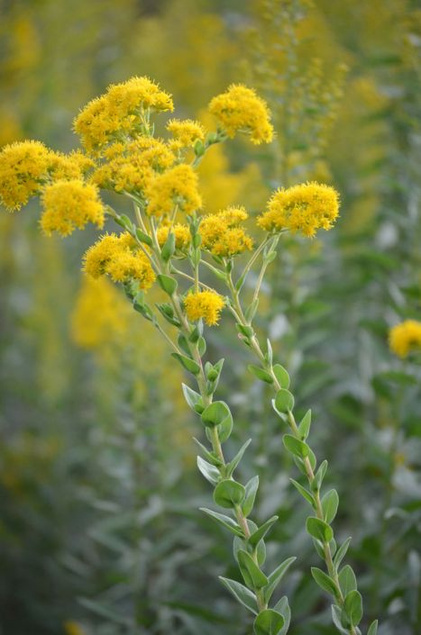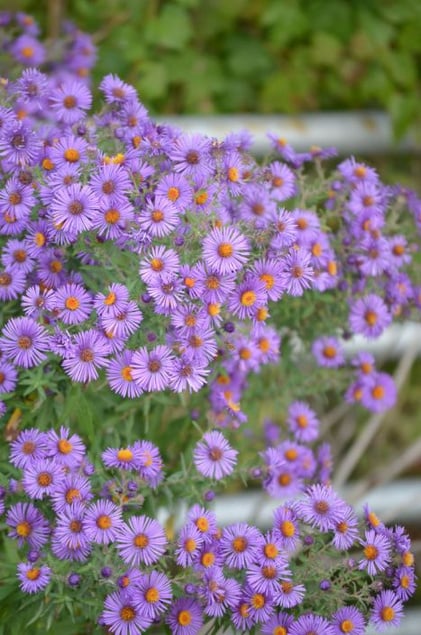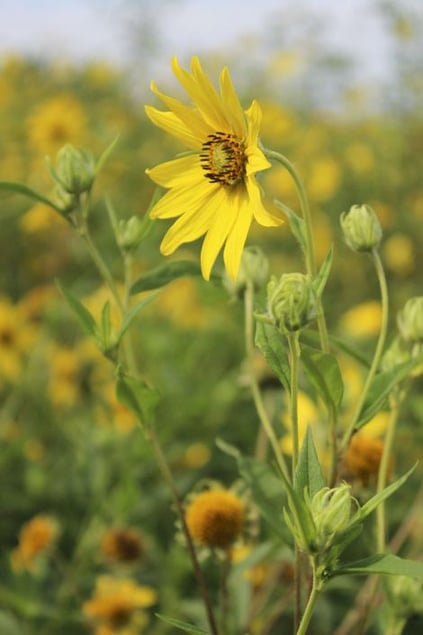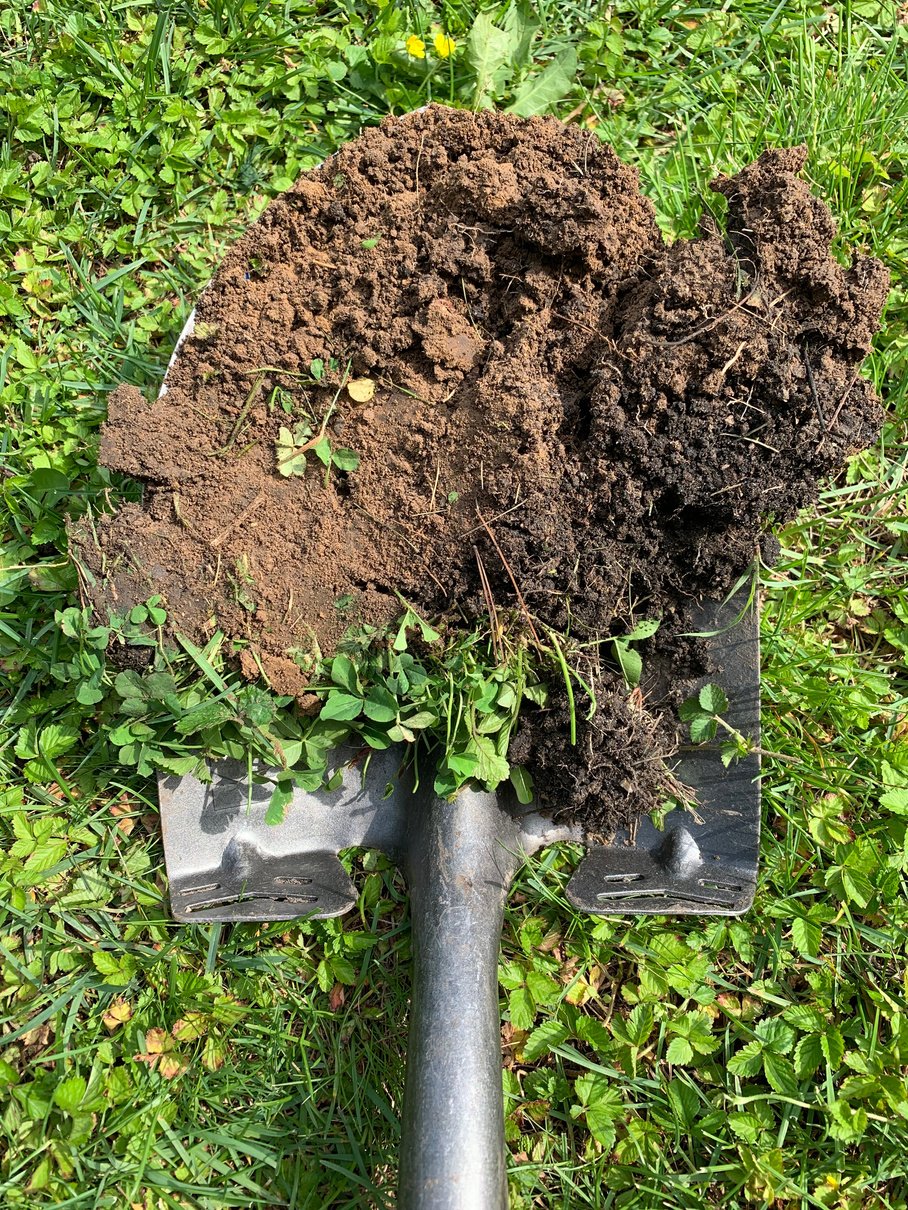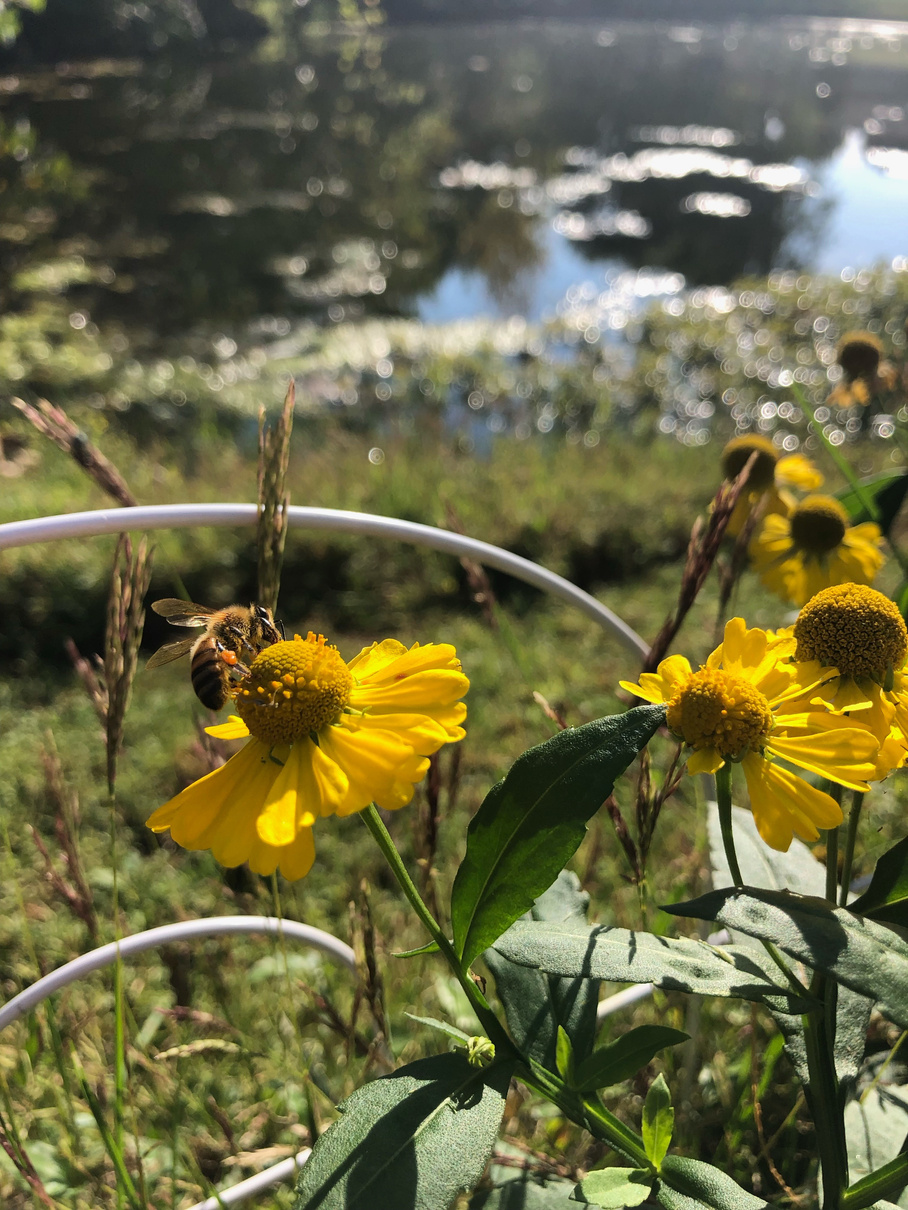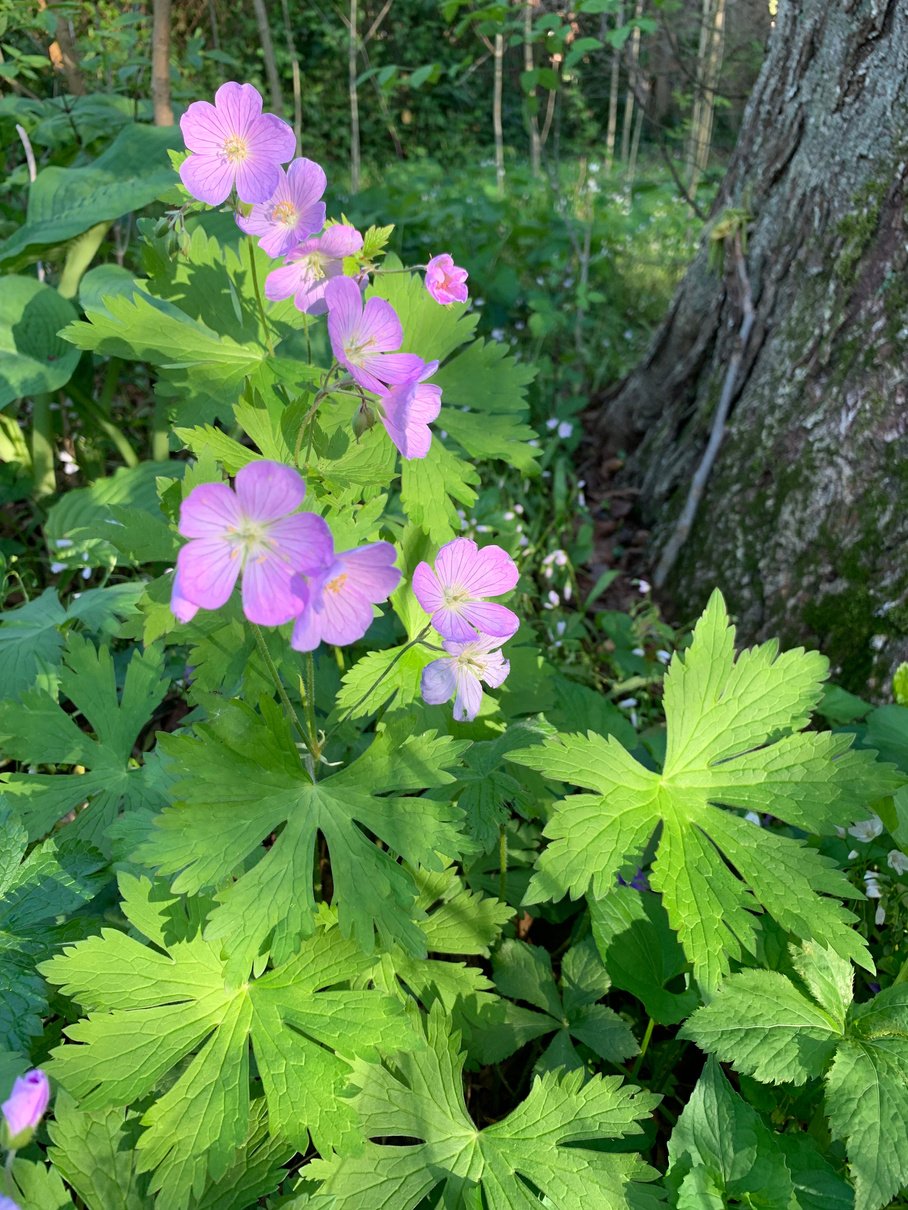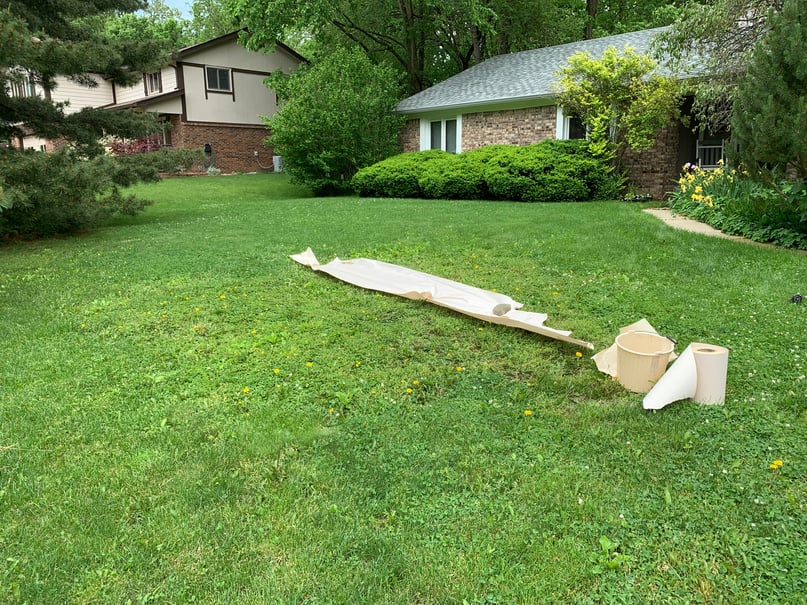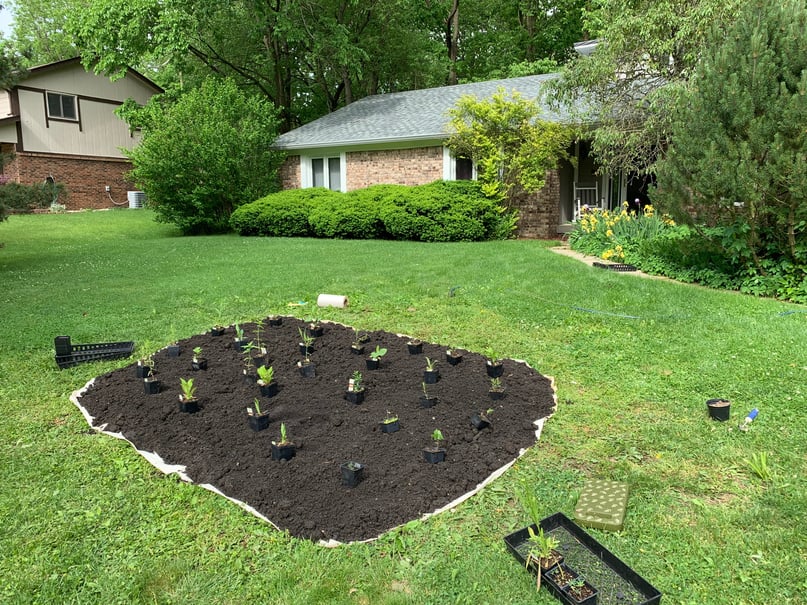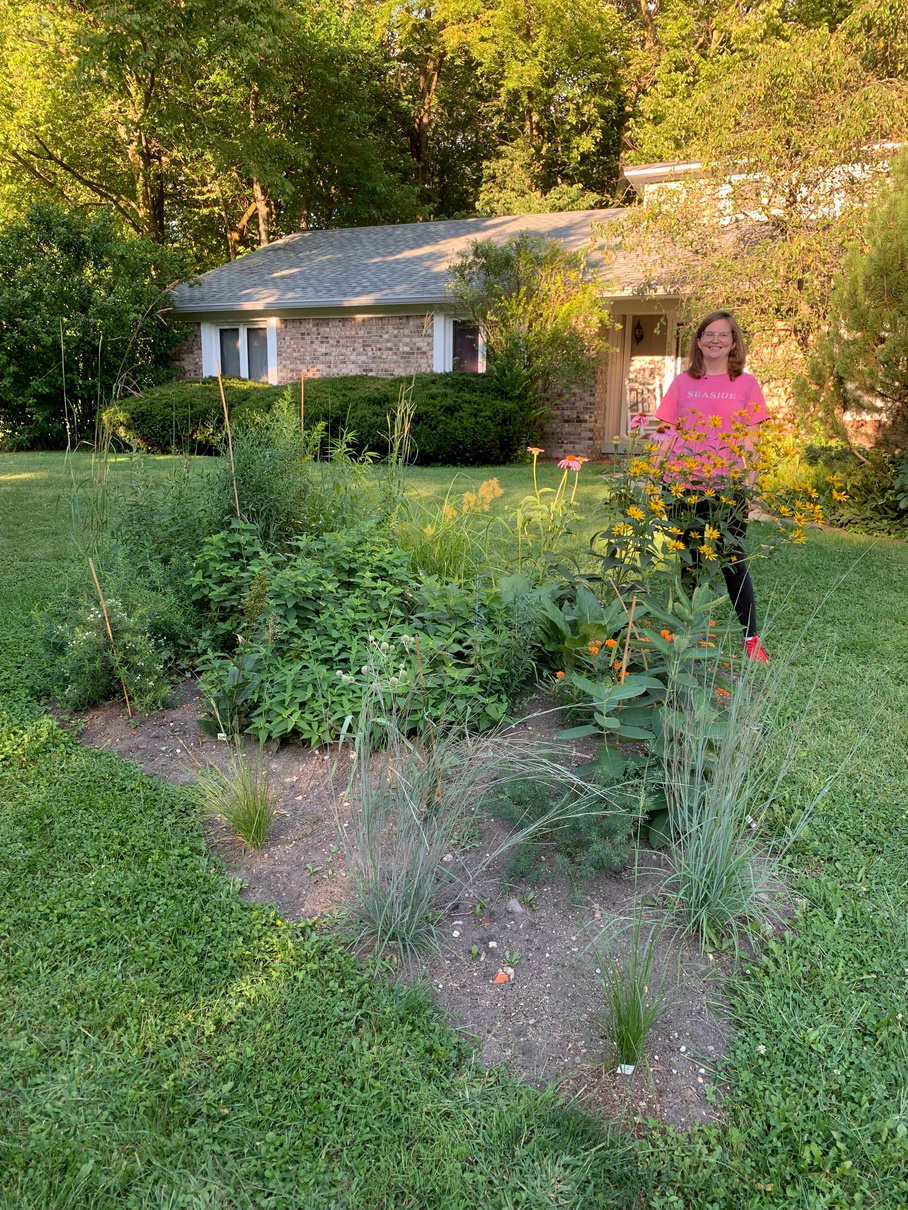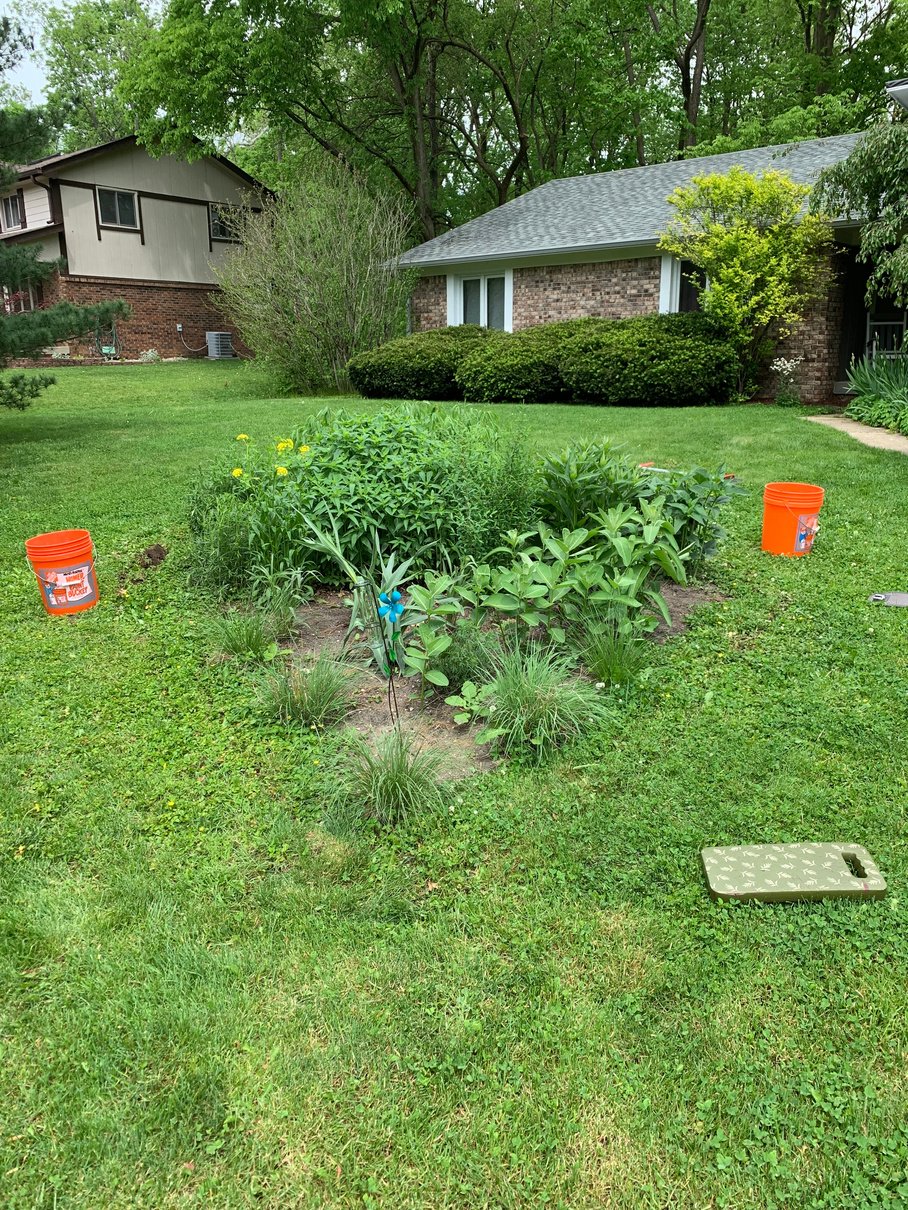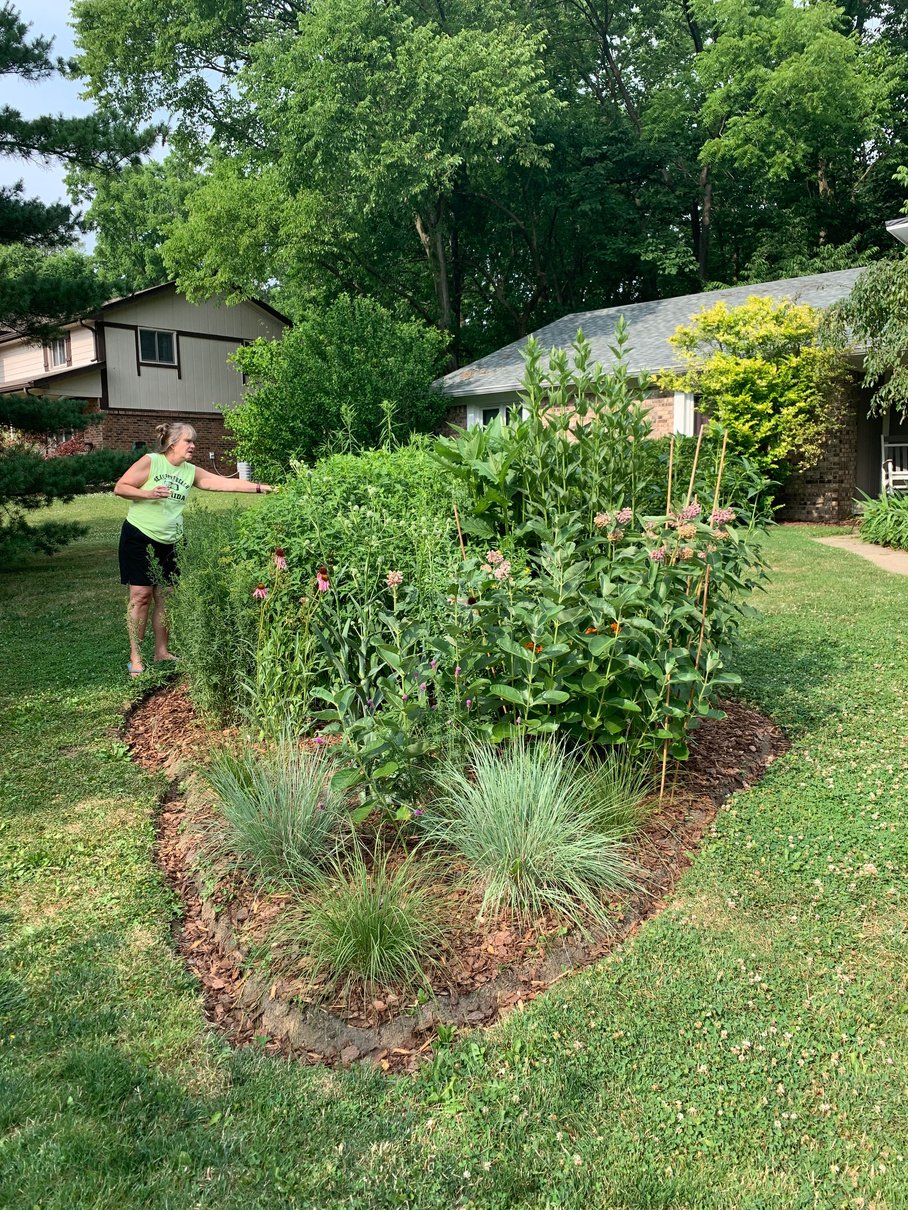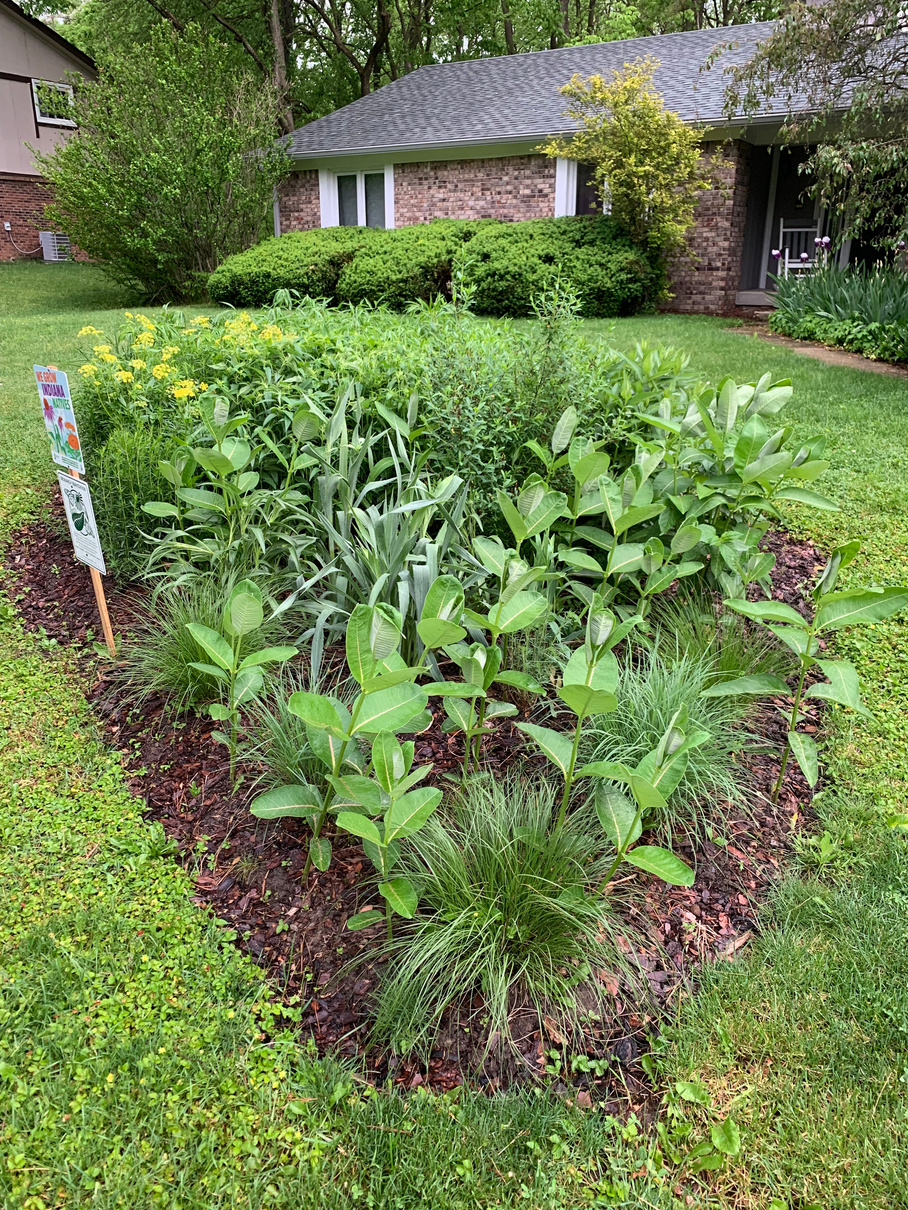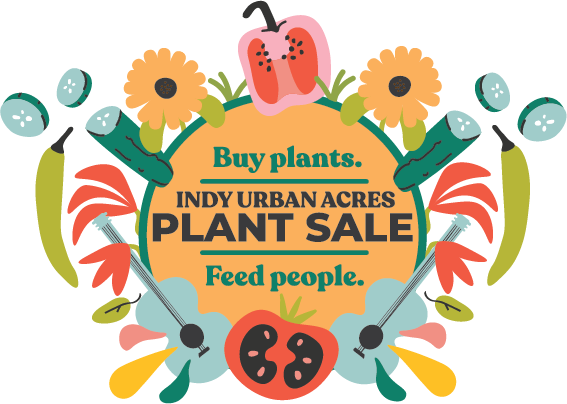Why plant native?
with
Sister Sedge
Explore these topics to learn
all about why native plants
are so important!
Why plant native?
So many Reasons!
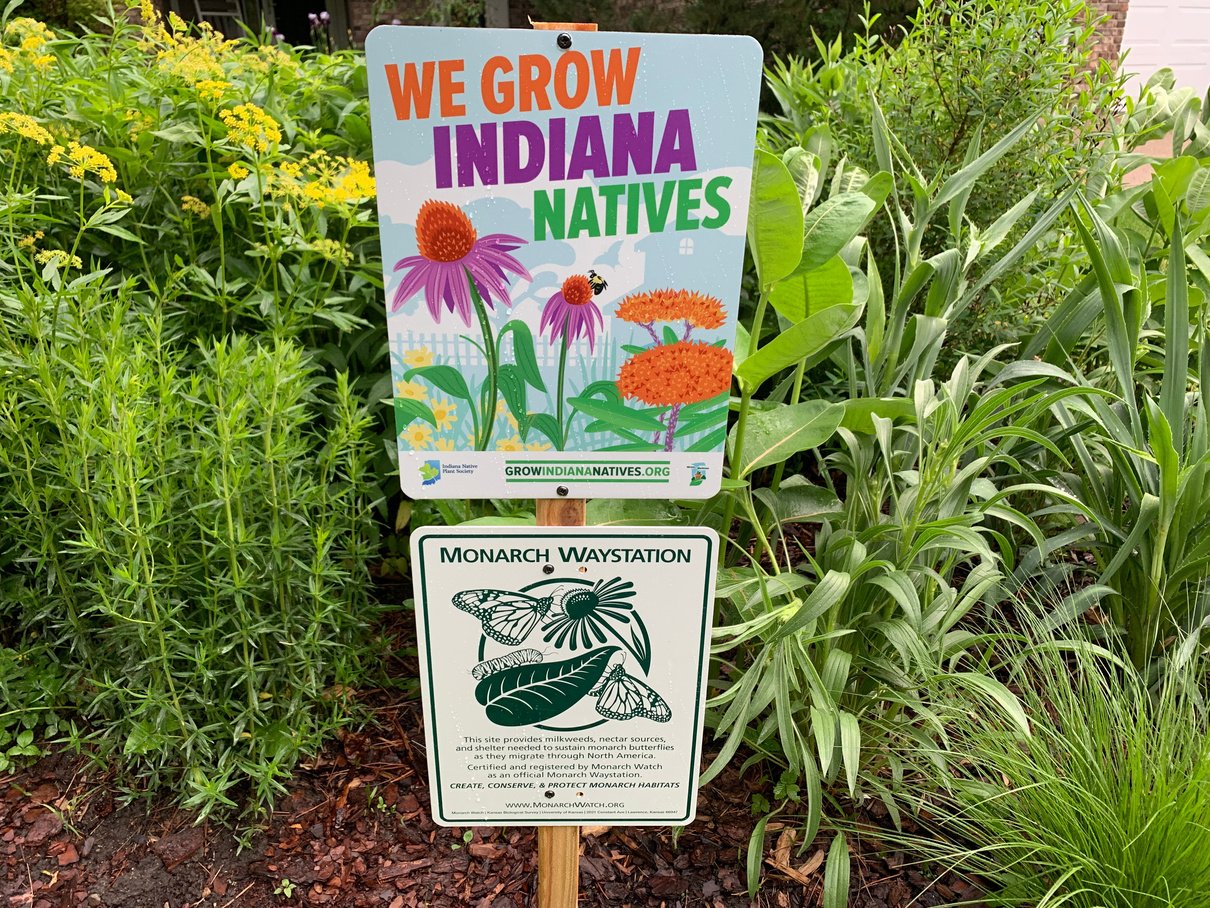
Native plants are plants found naturally in your area.
They have been growing “wild” for hundreds or thousands of years!
- Because native plants evolved with Indiana weather and its insects and animals, they are...
- Easy on water: once established, they require little (if any) watering.
- Not dependent on fertilizers: no chemicals are needed to help them grow.
- Great for wildlife: native insects, birds, mammals, and other creatures all benefit from and prefer native plantings.
- Often perennial: many native species last for years, weathering Indiana’s hot summers and cold winters.
- Better for the environment: conserving water, preventing pollution from chemical runoff, and supporting biodiversity all add up to responsible stewardship of the land.
- Where non-native lawns and gardens fail, native plants support Dr. Doug Tallamy’s Four Landscape Ecological Goals by:
- Supporting pollinators of all kinds throughout the entire growing season
- Providing energy for the local food web
- Managing the area watershed
- Removing and sequestering carbon from the atmosphere
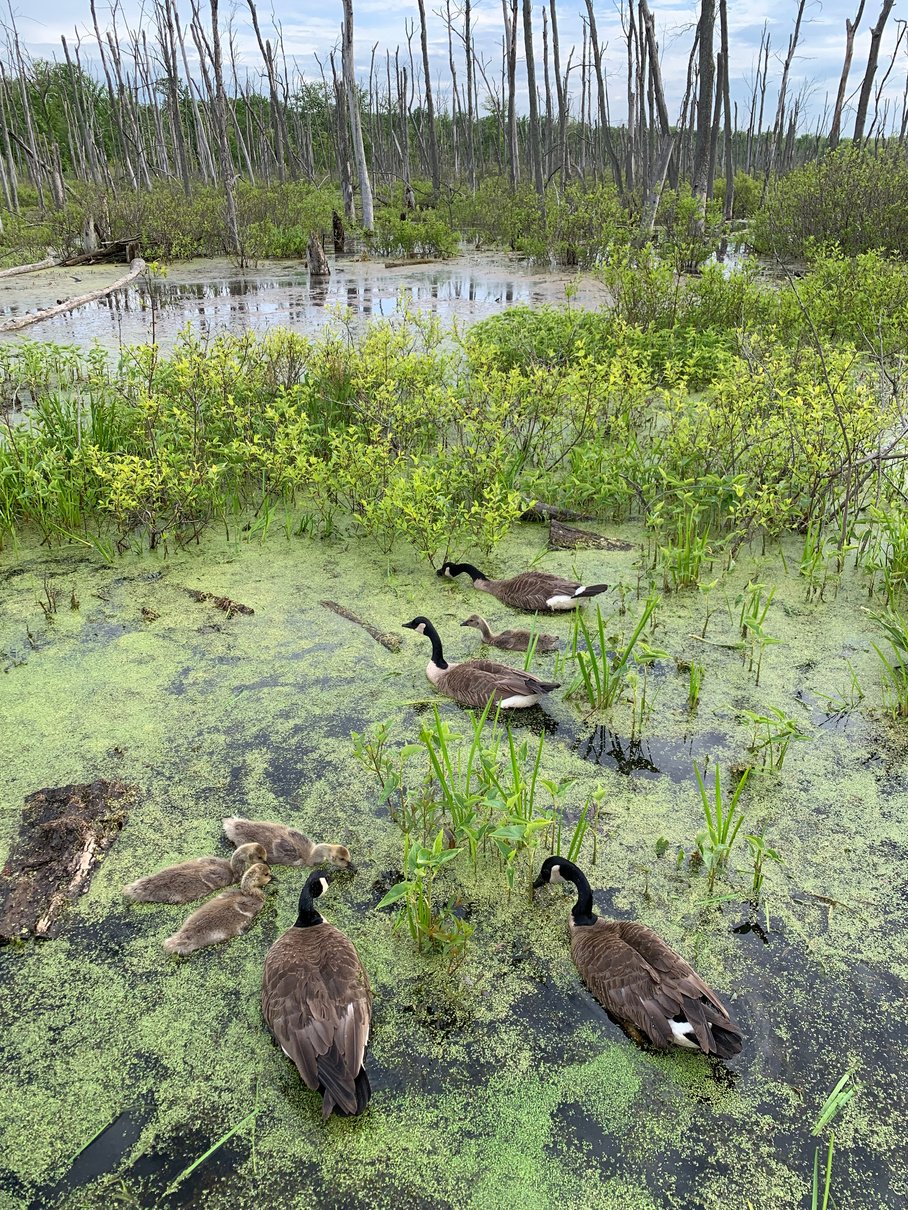
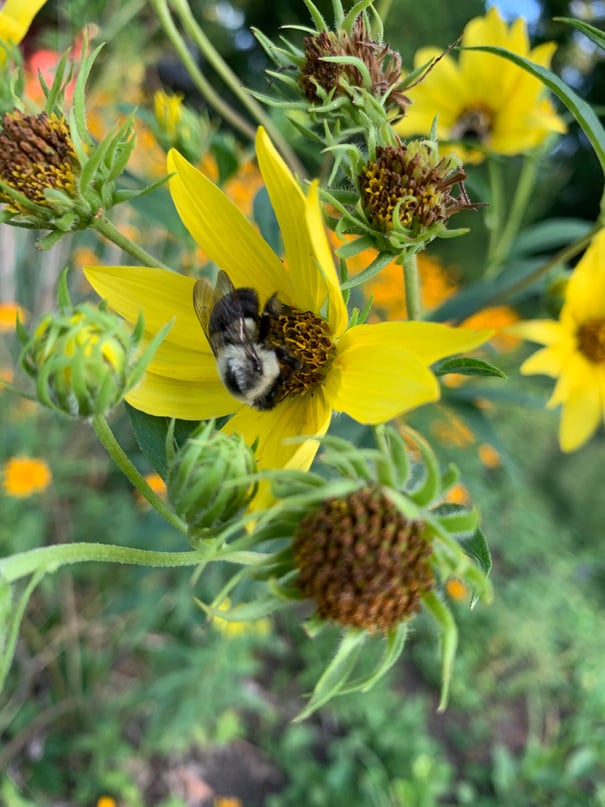

Boost Birds, Bees, and Butterflies
Love birds? Plant native! Aside from offering forage and shelter for a wide variety of birds, native plants host insects like caterpillars, essential for a baby bird’s diet.
Certain native plants offer forage considered superfoods to bees and pollinators, including the endangered Rusty-Patched Bumble Bee! Especially beneficial are goldenrods, giant hyssops, prairie clovers, coneflowers, joe pye weeds, wild bergamot (bee balm), New England aster, and lead plant. For more information, visit the Xerces Society for Invertebrate Conservation.
Milkweed and monarchs: you can’t have the latter without the former. Due to millennia of coevolution, monarch butterflies have come to rely on milkweed as their sole larval food source. However, habitat loss has drastically reduced the number of milkweed in the wild, putting monarchs at risk. Luckily, you can help by including it in your garden. No matter your site requirements, you can find a species of milkweed suited for different sun and soil conditions. Save the monarchs: plant more milkweed!
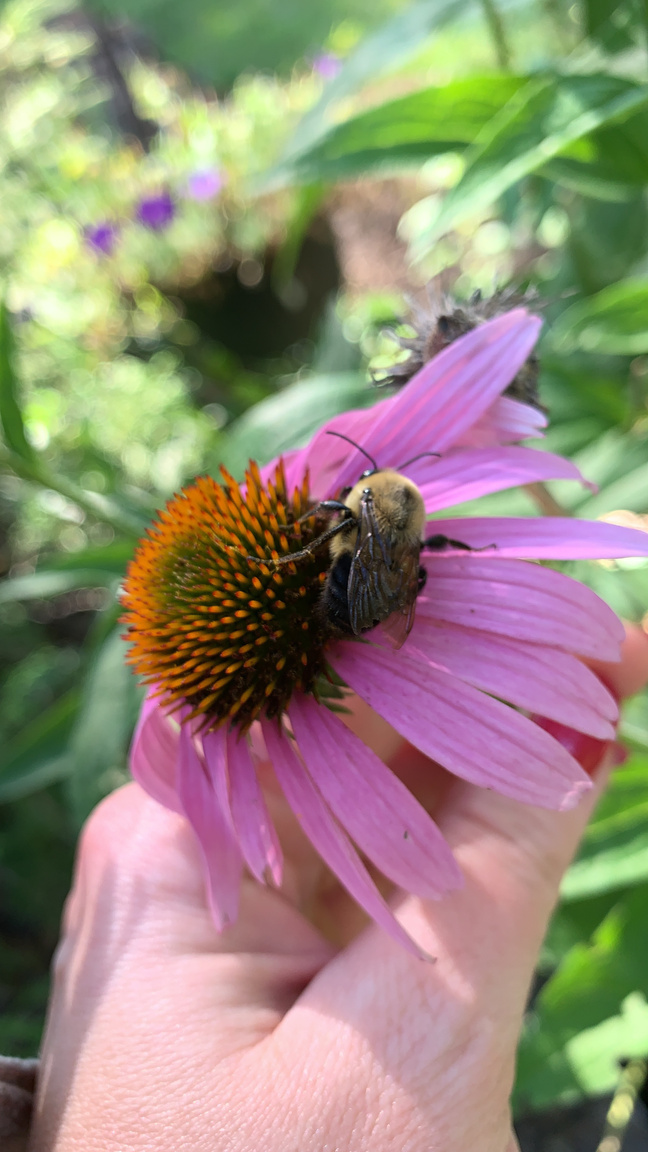
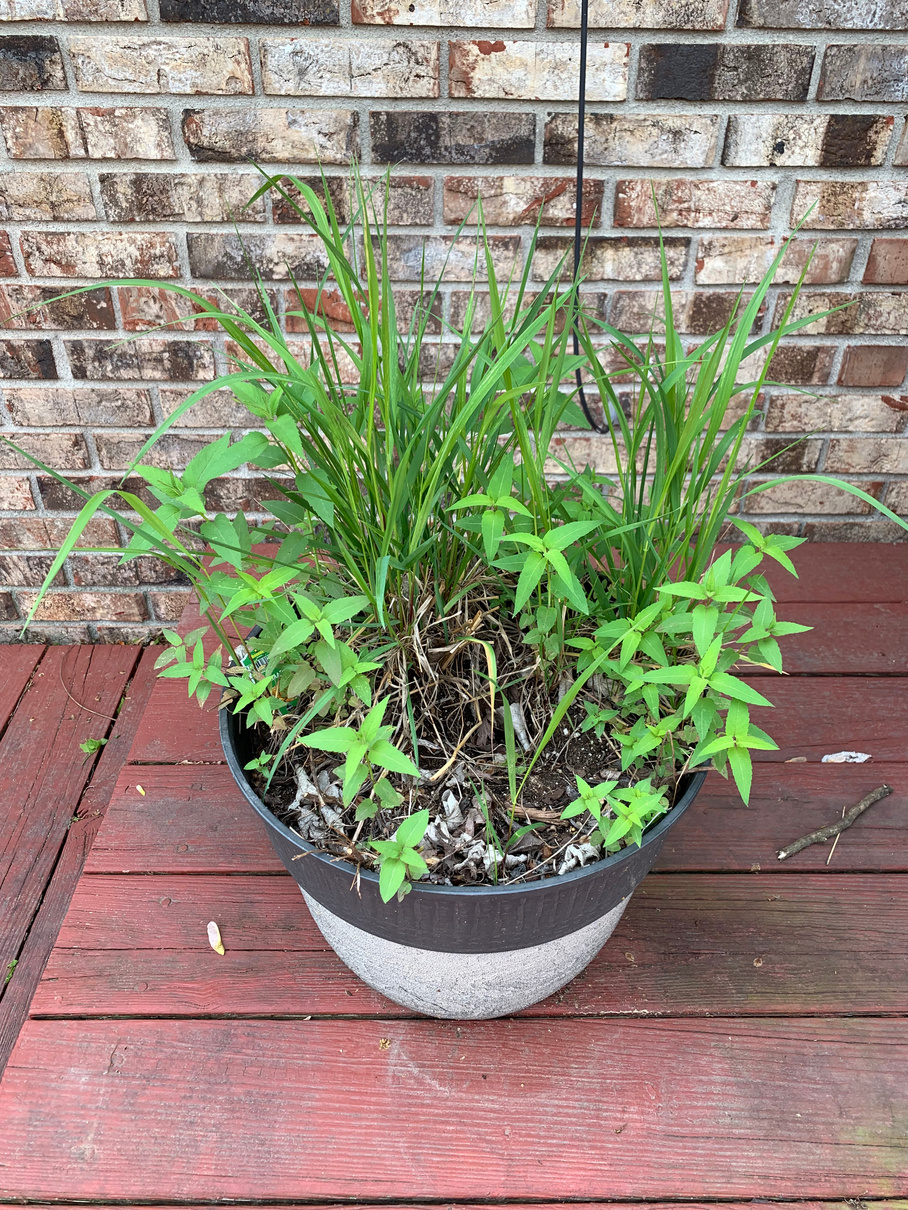
Hope Amidst Crisis:
Doing Your Part
Climate change. The biodiversity crisis. Wetlands stripped of federal protections. It’s no wonder that climate “doomers” are replacing “deniers” when we’re faced with bleak projections at every turn.
BUT--don’t lose hope! As you’ve learned, native plants benefit the environment in a myriad of ways, and filling your garden beds with native plants is a wonderful way to do your part to fight these crises. Don’t have a garden? They’ll grow in containers, too. The planter pictured here contains Virginia wild rye and wild bergamot (bee balm) planted back in May 2022, and it’s still going strong. As a bonus, you can harvest the seeds and spread them elsewhere in the landscape. Take a few tips from Dr. Doug Tallamy and get started today!
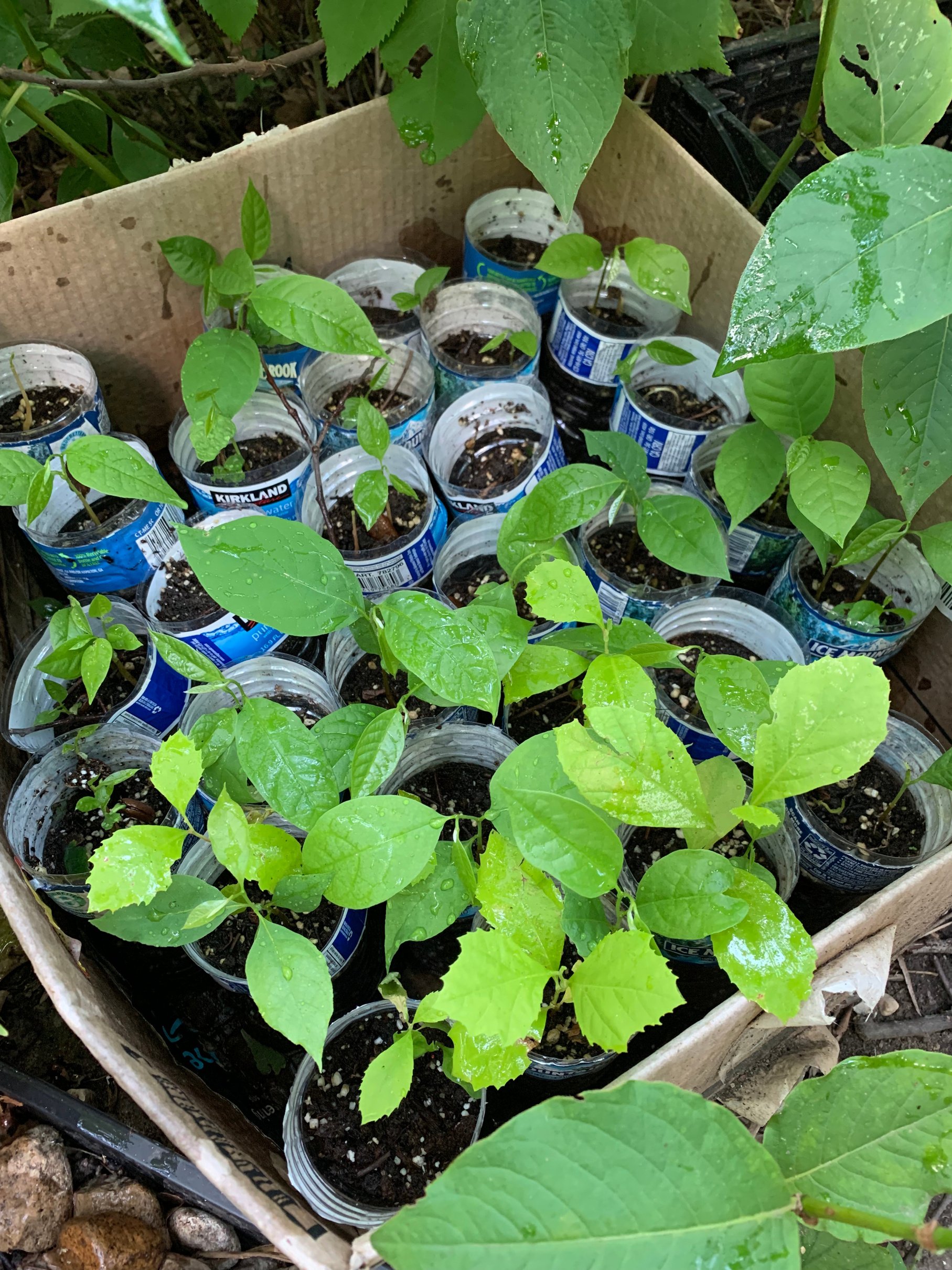
more great resources
recommended by sister sedge
Website Design and Content © 2024 Sister Sedge| Brought to you by an Advanced Indiana Master Naturalist | Happy Planting! plantnative.net
